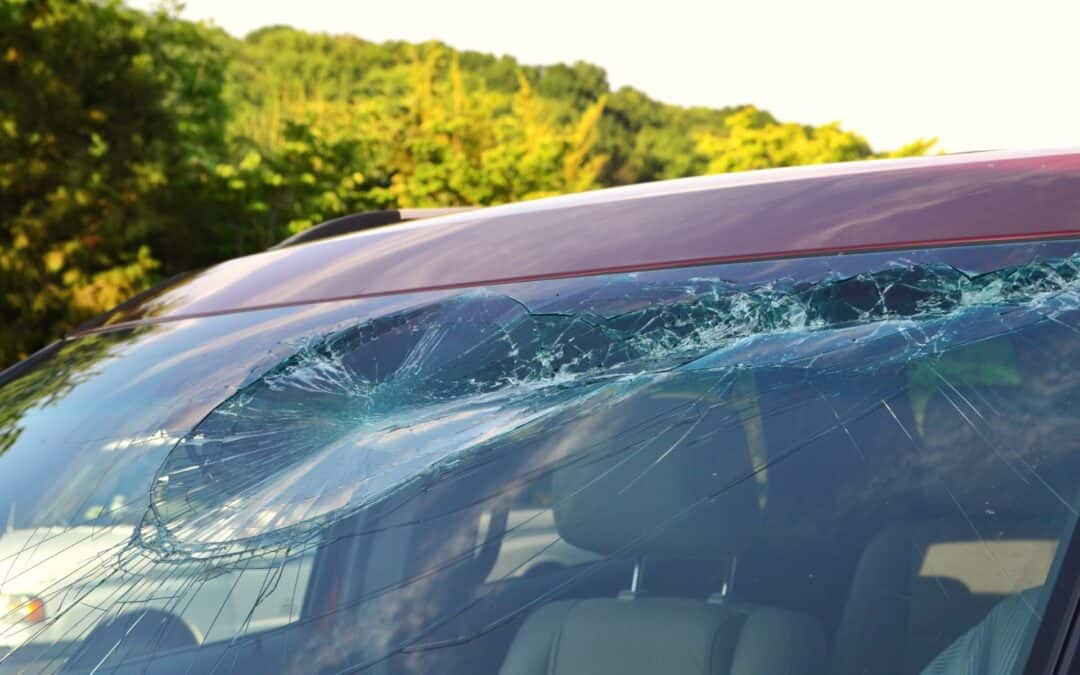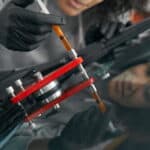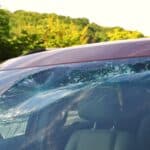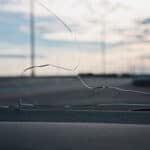Windshield damage can be stressful, but knowing whether you need a repair or a replacement can make the situation a bit easier. Sometimes, the decision is straightforward, while other times it can be more complex. Understanding the factors that determine if your windshield needs replacement instead of repair is crucial for making the right choice. Knowing when a windshield repair isn’t enough can save time, money, and keep you safe on the road.
Windshield Repair or Replacement Decision
Deciding between windshield repair and replacement isn’t always clear-cut. For example, imagine a driver who recently had a small chip in their windshield. They thought it was minor, but after a few days of fluctuating temperatures and some rough roads, the chip spread into a large crack that spanned half of the windshield. In this case, what might have been a simple repair turned into a situation where replacement was the only safe option. Several factors influence this decision, including:
- The size and extent of the damage.
- The location of the damage on the windshield.
- The type of damage, such as cracks, chips, or star breaks.
Windshield Repair Limits Based on Size
The size of the damage is one of the most important factors in determining whether a windshield can be repaired or if it needs to be replaced. Generally, chips smaller than a quarter and cracks less than three inches long can be repaired, according to the National Windshield Repair Association (NWRA). Anything larger typically requires replacement. But it’s not just about size. The depth of the damage also matters, as cracks that penetrate through both layers of glass usually call for a full replacement. Key considerations for size and extent of damage include:
- Chips smaller than a quarter can usually be repaired.
- Cracks shorter than three inches can often be repaired.
- Damage that penetrates both layers of glass usually requires replacement.
Windshield Repair for Edge Damage
The location of the damage on your windshield plays a critical role in deciding whether repair or replacement is necessary. Damage located near the edges of the windshield is more likely to require replacement, even if it’s relatively small. This is because cracks and chips near the edges can weaken the structural integrity of the windshield, making it more susceptible to further damage. The edges of the windshield are under more stress and pressure, which can cause small damage to spread quickly. Important factors for edge damage include:
- Edge damage is more likely to require replacement.
- Cracks and chips near the edges weaken the windshield.
- The structural integrity of the windshield is compromised by edge damage.
Windshield Repair for Different Damage Types
Different types of windshield damage require different approaches. Not all cracks and chips are the same, and the type of damage can significantly impact whether a repair will suffice. For example, a star break, which has multiple cracks radiating from a central point, might require a different approach than a bullseye crack, which is circular and contained. Star breaks are often more challenging to repair because the cracks can continue to spread outward, making replacement a safer option. Considerations for damage types include:
- Star breaks with multiple cracks may require replacement.
- Bullseye cracks are more likely to be repaired.
- Complex damage with multiple crack patterns is harder to repair.
Windshield Repair Safety Implications
Safety is always a top priority when it comes to windshield damage. A windshield isn’t just a piece of glass; it’s a crucial part of your vehicle’s structural support. It helps maintain the integrity of the car during a collision and ensures that airbags deploy correctly. When damage compromises the windshield, it can jeopardize the safety of everyone in the vehicle. For example, large cracks or extensive damage can prevent the windshield from performing its safety functions, making replacement necessary to ensure the vehicle remains safe to drive. Key safety implications include:
- Large cracks compromise the windshield’s structural integrity.
- Extensive damage may prevent proper airbag deployment.
- A compromised windshield cannot provide adequate protection in an accident.
Windshield Repair for Clear Visibility
Visibility is another critical factor in deciding between windshield repair and replacement. If damage obstructs the driver’s view, it can make driving dangerous, even if the damage seems minor. Chips and cracks that are directly in the driver’s line of sight can create glare, distort the view, and increase the risk of an accident. Sometimes, even a repair might not completely remove the visibility issues, in which case replacement becomes necessary to ensure clear and safe driving. Factors impacting visibility include:
- Damage in the driver’s line of sight can create dangerous glare.
- Cracks and chips can distort the driver’s view.
- Replacement may be needed if repair does not restore clear visibility.
Windshield Repair and Insurance Coverage
Insurance can play a significant role in whether you decide to repair or replace your windshield. Many insurance policies cover windshield repairs with little to no deductible, making it an attractive option for drivers. However, if the damage is severe and requires a full replacement, the cost can be much higher, and insurance coverage can vary. Some policies might cover the replacement, but it’s important to check with your provider to understand your coverage. Factors to consider with insurance coverage include:
- Many insurance policies cover repairs with minimal deductible.
- Replacement costs can be significantly higher than repair costs.
- It’s important to verify your insurance coverage for windshield damage.
Making the Windshield Repair or Replacement Decision
Deciding whether to repair or replace your windshield requires careful consideration of several factors. The size, location, and type of damage, along with safety concerns and visibility issues, all play a role in making the best choice. Understanding these factors can help drivers make informed decisions that keep their vehicles safe and roadworthy. Professional advice is always recommended when you’re unsure about the best course of action, as a trained technician can assess the damage and recommend the appropriate solution. Key factors to keep in mind when making this decision include:
- Assess the size and depth of the damage.
- Consider the location of the damage and its impact on safety.
- Evaluate the type of damage and its potential to spread.
Key Takeaways for Windshield Repair or Replacement
- Damage Size and Depth: Smaller chips and cracks may be repairable, while larger or deeper damage often requires replacement.
- Location of Damage: Damage near the edges or in the driver’s line of sight is more likely to need replacement.
- Safety Concerns: A compromised windshield can affect the structural integrity of the vehicle and airbag deployment, necessitating replacement.
- Visibility Issues: Damage that obstructs the driver’s view can be dangerous and may require replacement even after a repair attempt.
- Insurance Coverage: Check your insurance policy to understand what is covered for windshield repair versus replacement.
Frequently Asked Questions
- Can a repaired windshield be as strong as a new one?
Yes, if the repair is done correctly by a professional, a repaired windshield can restore much of its original strength, but it may not be as strong as a completely new windshield. - What’s the cost difference between windshield repair and replacement?
Repair is generally much cheaper, often costing around $50 to $150, while replacement can range from $200 to $1,000 or more, depending on the vehicle and the windshield type. - How long does a windshield repair take compared to a replacement?
Windshield repair typically takes 30 minutes to an hour, while replacement can take a couple of hours, plus additional time for the adhesive to cure. - Can I drive immediately after my windshield is replaced?
No, you should wait at least one hour, or as recommended by the technician, to allow the adhesive to set properly before driving. - Does insurance cover windshield replacement for all types of damage?
Coverage varies by policy and provider, but many comprehensive insurance policies cover windshield replacement, especially if the damage affects safety or visibility.
Elite Windshield Repair LLC provides fast, reliable vehicle windshield repair services, specializing in fixing chips and cracks up to 10 inches. Founded in 2024, the company offers free mobile service across the North and South Shore, ensuring convenience for every customer. With a focus on quality, Elite Windshield Repair guarantees customer satisfaction by providing a 1-year warranty on all workmanship. The company also offers headlight restoration and windshield wiper replacements to keep your vehicle in top condition. Locally owned and operated, Elite Windshield Repair is committed to delivering exceptional service with every repair.












